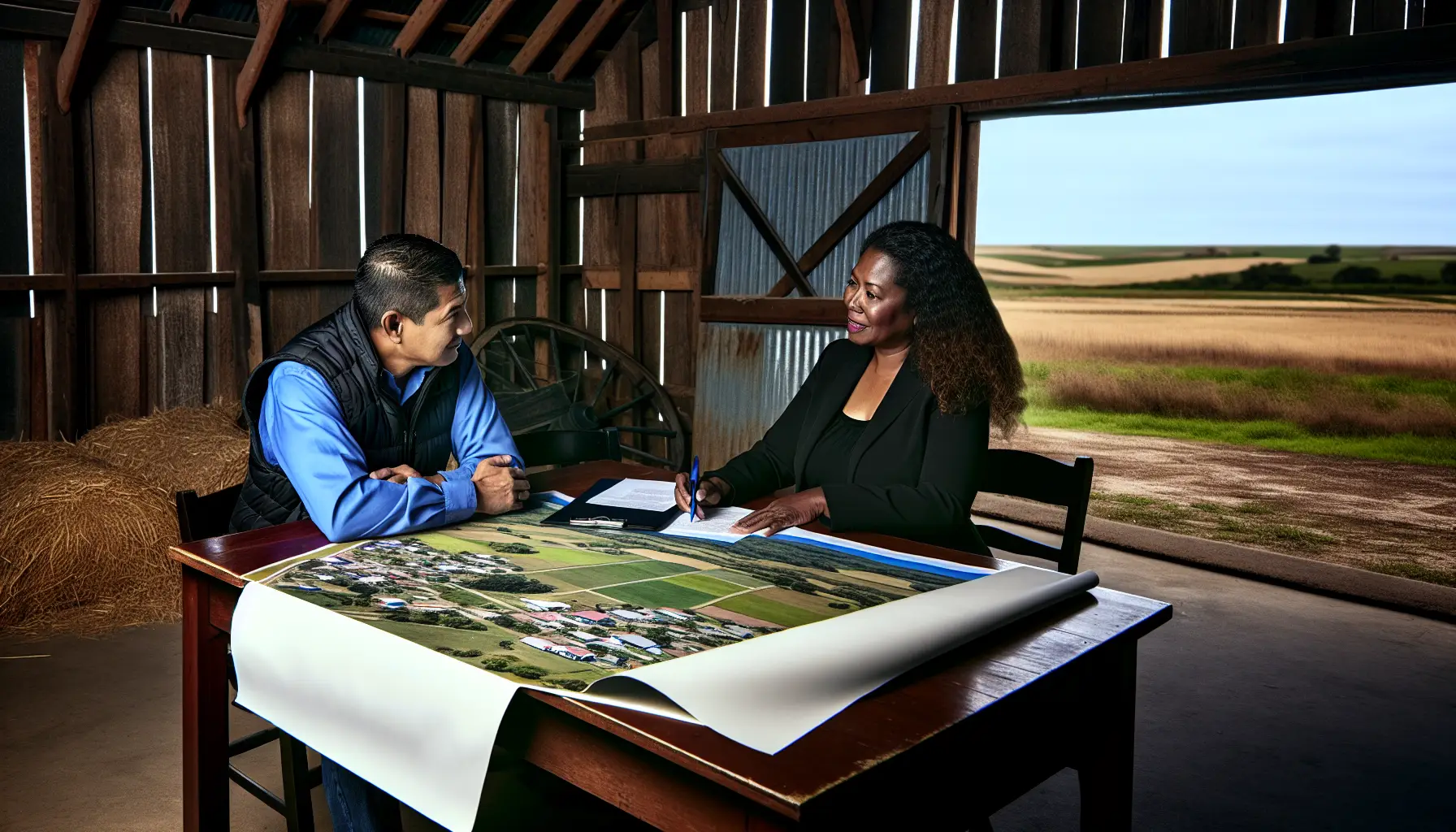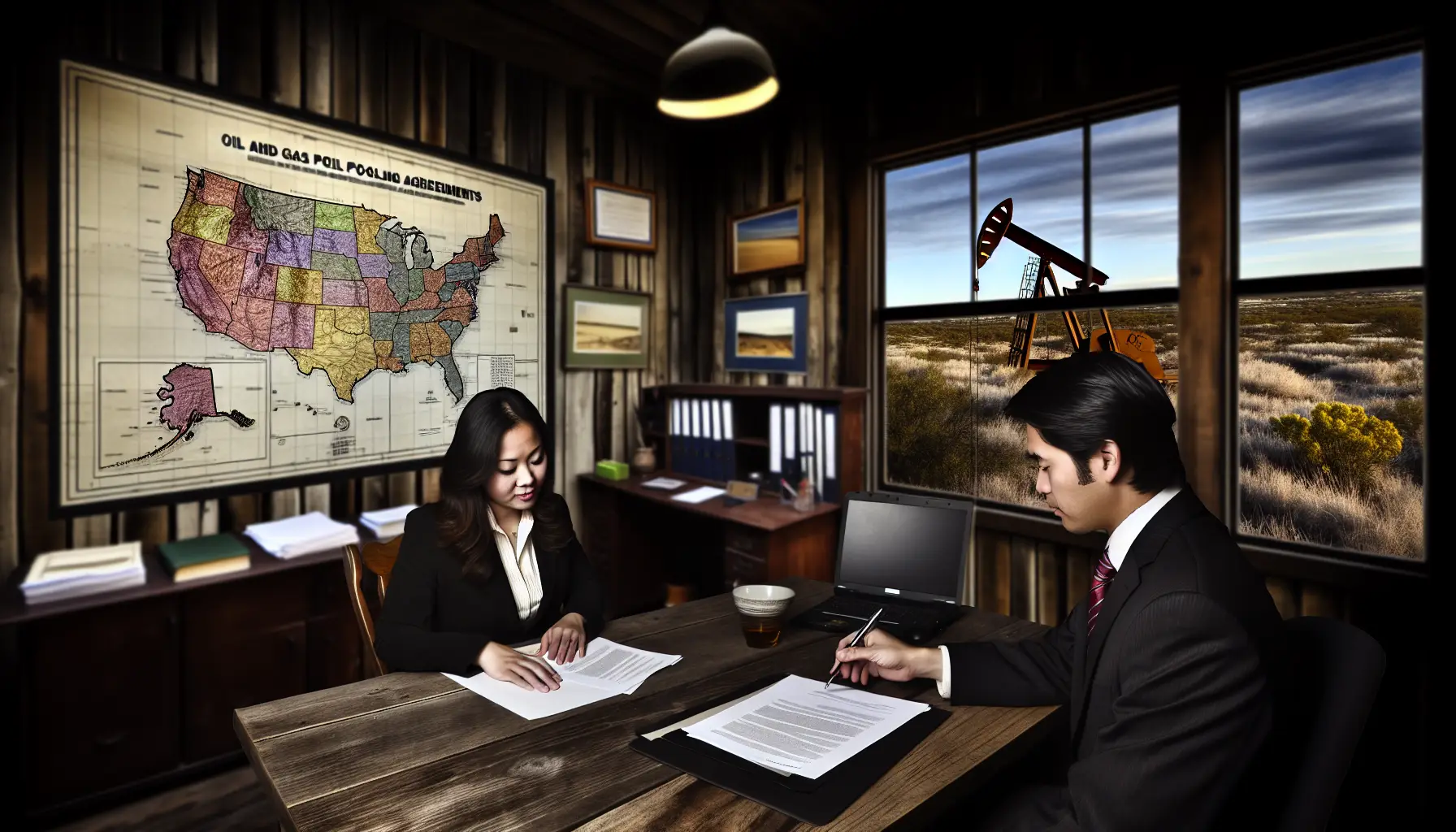When a group of estate planning attorneys in California needed assistance handling a complex transfer of mineral rights into a family trust, they turned to Daughtrey Law for support. The goal was to secure the family’s legacy by protecting and preserving mineral assets across multiple properties—some of which were already under lease to oil companies.
In This Article:
Client Background
The client in this case was a respected team of estate planning attorneys based in California. They represented a multi-generational family that owned mineral rights tied to several pieces of land throughout the state. These rights had been passed down through different branches of the family and were held under individual names. Over the years, the value of these mineral interests had grown—some were actively producing income through oil leases, while others held future development potential.
The family wanted to take a proactive step toward long-term wealth preservation. By moving the mineral rights into a well-structured family trust, they hoped to create a single, centralized entity that could manage current leases, streamline income distribution, and avoid future disputes among heirs. This would also simplify legal and tax responsibilities across generations.
To accomplish this, the estate planning attorneys needed a legal partner with in-depth experience in mineral rights, trust structures, and oil and gas lease law. That is where Daughtrey Law came in—to help them complete the transfer cleanly, efficiently, and in full legal compliance.
The Challenge
Transferring mineral rights into a trust might sound straightforward—but when the rights are spread across several owners, cover multiple counties, and include active oil leases, things can get complicated quickly. In this case, each piece of land had its own title history, some of which had not been updated in years. Some mineral interests had been inherited without clear documentation, which created uncertainty about ownership shares.
In addition, a portion of the mineral rights was already leased to oil companies. These leases included ongoing royalty payments, but also carried legal obligations and rights of renewal. Any transfer of ownership needed to respect these contracts—and ensure that the companies involved recognized the trust as the new legal owner.
Finally, California’s estate tax laws and regulations surrounding mineral assets added another layer of complexity. The attorneys needed a solution that would protect the family’s wealth, minimize tax exposure, and ensure future compliance. Daughtrey Law was brought in to address all these issues with care and precision.
Assessment of Mineral Rights Ownership
We started by rolling up our sleeves and digging into the public record. Before any legal transfer could occur, we needed to identify exactly what the family owned, where it was located, and under whose name it was currently recorded. This meant reviewing decades of property records, mineral deeds, probate files, and lease agreements.
Some rights were straightforward—clearly owned and documented. Others had gaps in title history, which required us to track inheritance lines and confirm ownership through affidavits or probate rulings. In a few cases, we discovered mineral interests that the family did not even realize they still owned.
Our thorough approach ensured that no asset was left out. We created a full inventory of mineral interests and matched each one to the correct legal documentation. This clarity was essential—not only for the legal transfer, but also for future estate planning and lease management.
This initial review phase laid the foundation for the trust transfer. Once we confirmed ownership, we were able to move on to designing a trust structure that would hold these assets and serve the family for years to come.
Custom Trust Agreement Drafting
With the mineral rights fully identified and documented, the next step was to create a trust agreement that met the family’s unique needs. A generic trust template would not work here—this trust needed to manage complex assets, support multiple beneficiaries, and outline rules for handling current and future income.
We worked closely with the estate planning attorneys to draft a custom trust document. It included detailed provisions to guide how lease income would be divided, who could authorize future lease agreements, and how decisions would be made if there was disagreement among the beneficiaries. The goal was to reduce the risk of internal conflict and create a smooth process for managing the mineral rights over time.
Just as important, the trust was designed to evolve. If new mineral interests were discovered later or if ownership needed to shift due to marriage, death, or sale, the trust included clear steps for how to handle these events without confusion or legal disputes. This flexible yet protective framework gave the family peace of mind that the trust could adapt with their needs.
Lease Transfers and Amendments
Several of the mineral rights were tied to active oil leases. That meant we could not simply transfer the mineral rights and call it done—we also had to make sure the leases followed. This required formal communication and cooperation with the oil companies involved.
We reviewed the original lease agreements, looking for clauses related to ownership transfers and assignments. In some cases, we had to draft lease amendments to officially name the family trust as the new recipient of royalties. This ensured the income would keep flowing uninterrupted and that there would be no confusion about where payments should be sent.
We coordinated signatures, provided proof of the trust’s legal status, and answered questions from the oil companies to move the process along quickly. Thanks to this step, the transition from individual ownership to trust ownership was smooth—not just on paper, but in practice. The trust was now the recognized legal party to the leases, with no interruption in payments.
Tax Planning and Compliance
Because California has its own rules for estate taxes—and mineral rights can significantly affect the value of an estate—tax planning was a key part of our strategy. We partnered with local tax professionals to evaluate how the transfer would affect both short-term tax obligations and long-term liability for the family.
Our goal was to structure the trust in a way that preserved the family’s wealth while remaining fully compliant with state and federal tax codes. This included timing the transfers properly, choosing the right type of trust, and documenting the fair market value of the mineral rights. We also looked at whether the trust could qualify for certain exemptions or valuation discounts to reduce future estate taxes.
By involving tax experts early and aligning their guidance with our legal work, we helped the family avoid surprise tax bills and set them up for sustainable financial management. This coordination between legal and tax planning is often where long-term success is either made—or missed. In this case, it was a major win.
Execution of the Transfer
After the groundwork was laid—ownership clarified, trust documents finalized, and lease agreements updated—it was time to officially execute the transfer. This is where precision and attention to legal detail mattered most. We began by preparing and filing deeds to transfer the mineral interests from the individual owners into the newly created family trust.
Because the properties were located in multiple counties, we had to work with several county recorder offices to ensure that each transfer was legally recognized and publicly recorded. This process included verifying legal descriptions, preparing affidavits where needed, and coordinating notary services for multiple family members.
Every filing was double-checked to ensure accuracy. We kept detailed records of each submission and provided confirmation to both the family and the estate planning attorneys once the documents were officially recorded. This final step cemented the legal structure and gave the family peace of mind knowing their mineral rights were now protected within the trust.
Outcome
Thanks to a detailed and collaborative approach, the transfer of mineral rights into the family trust was completed successfully. The family now has a single, unified entity to manage all mineral assets, which greatly simplifies lease negotiations, royalty tracking, and future estate planning. They no longer have to worry about fractured ownership or confusion over who is entitled to what.
Even better, the structure we helped design provides legal clarity for generations to come. The trust outlines who has decision-making authority, how income is distributed, and what happens in the event of death or inheritance. Combined with strong tax planning, the family’s wealth is better protected—and far easier to manage—than it was before.
The estate planning attorneys were also able to deliver a better outcome for their client, with Daughtrey Law providing the mineral rights expertise they needed to complete the transfer smoothly and efficiently.
Client Testimonial
“Mr. Daughtrey’s expertise in mineral rights was invaluable to our client. Their team worked seamlessly with us to handle the complexities of this trust transfer, ensuring that our client’s legacy was protected. We would highly recommend them to any estate planning professionals dealing with mineral assets.”






















